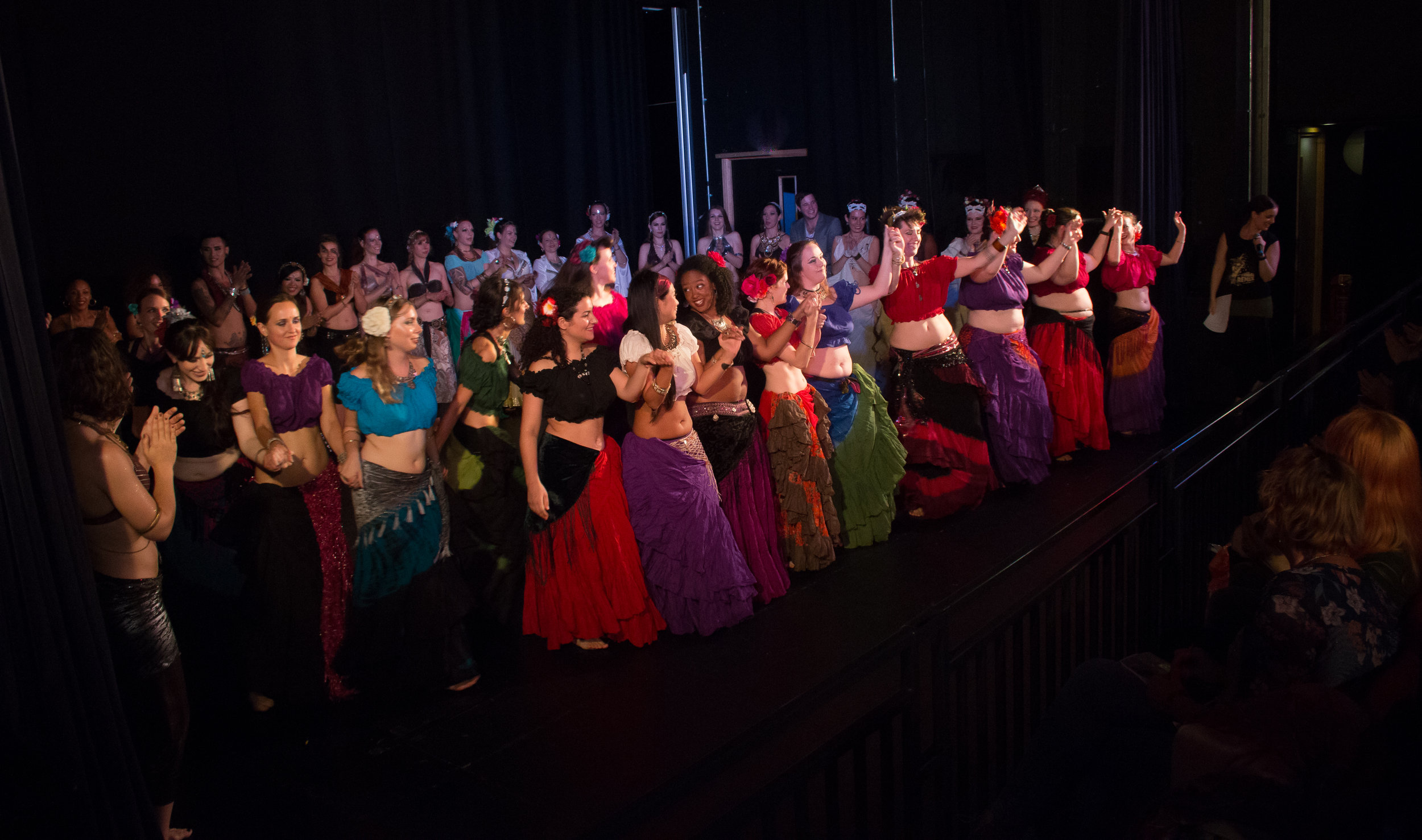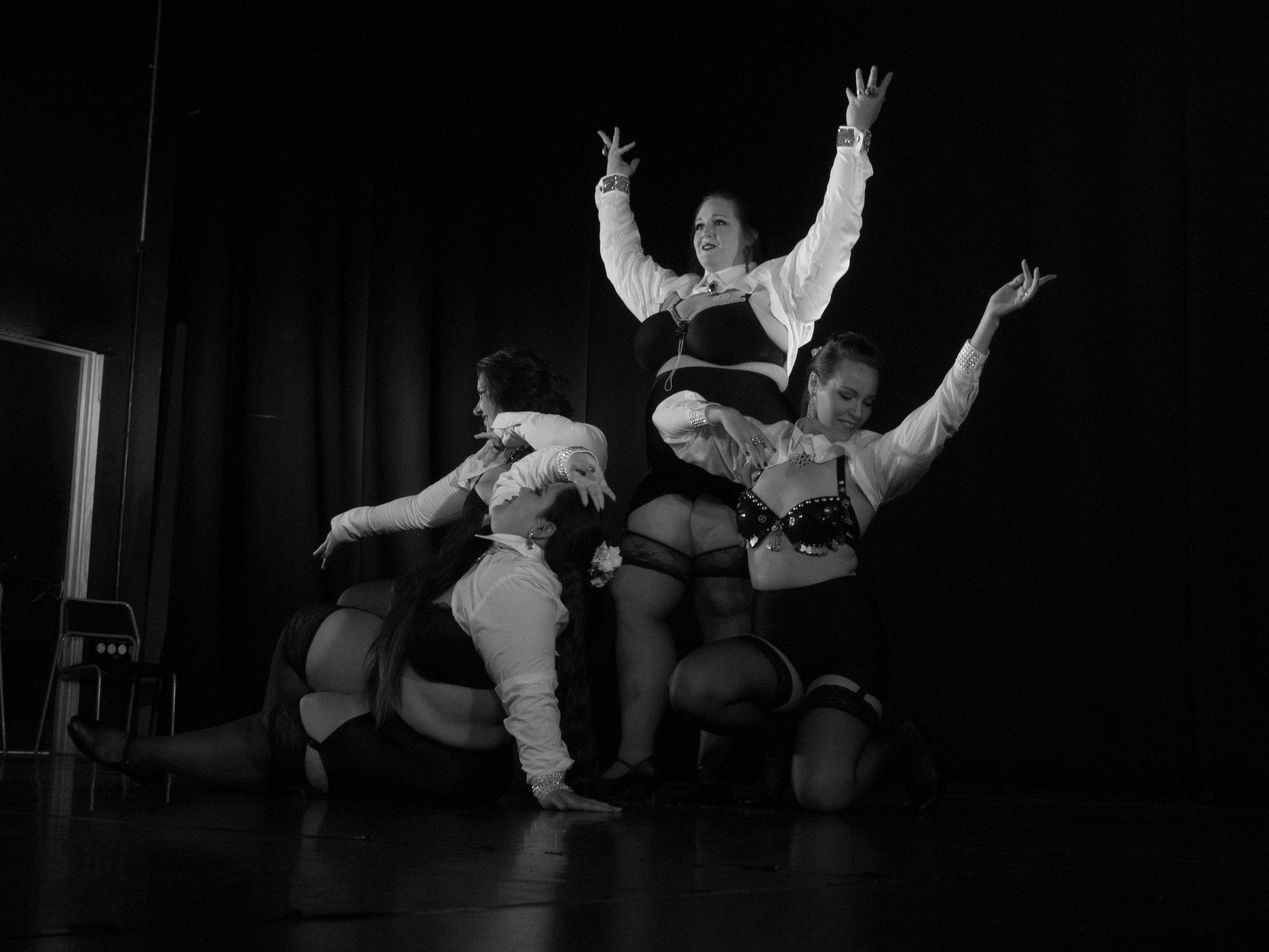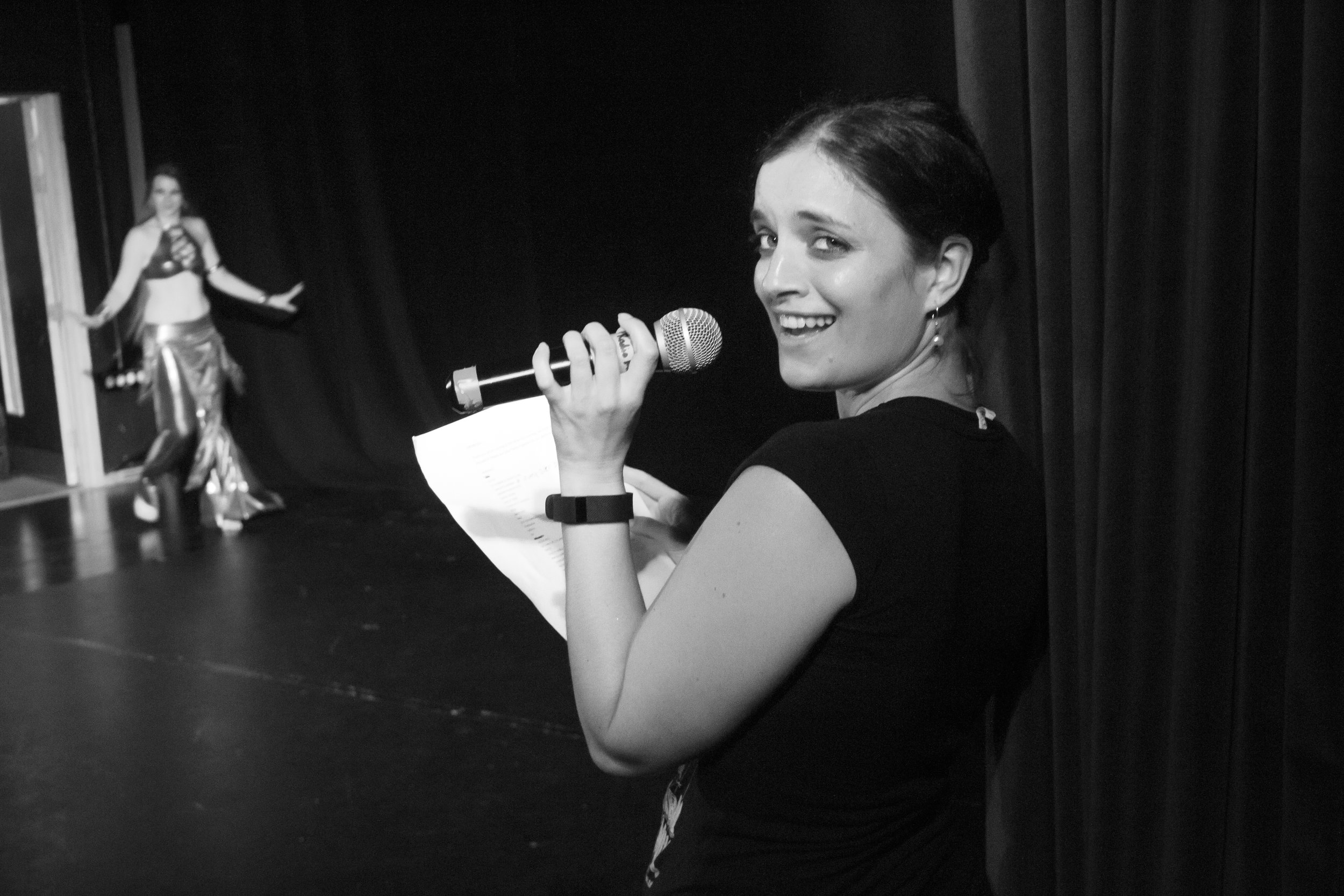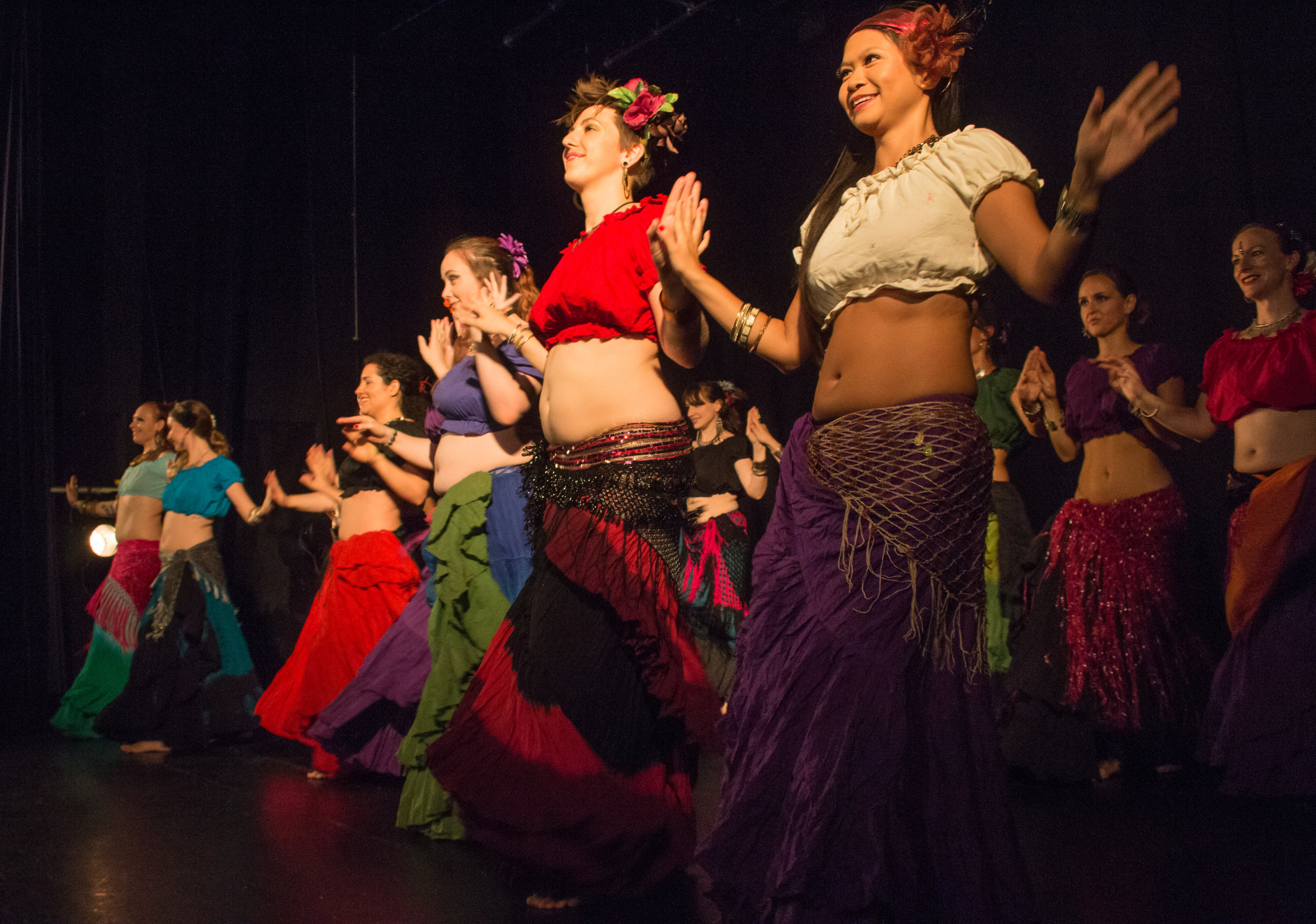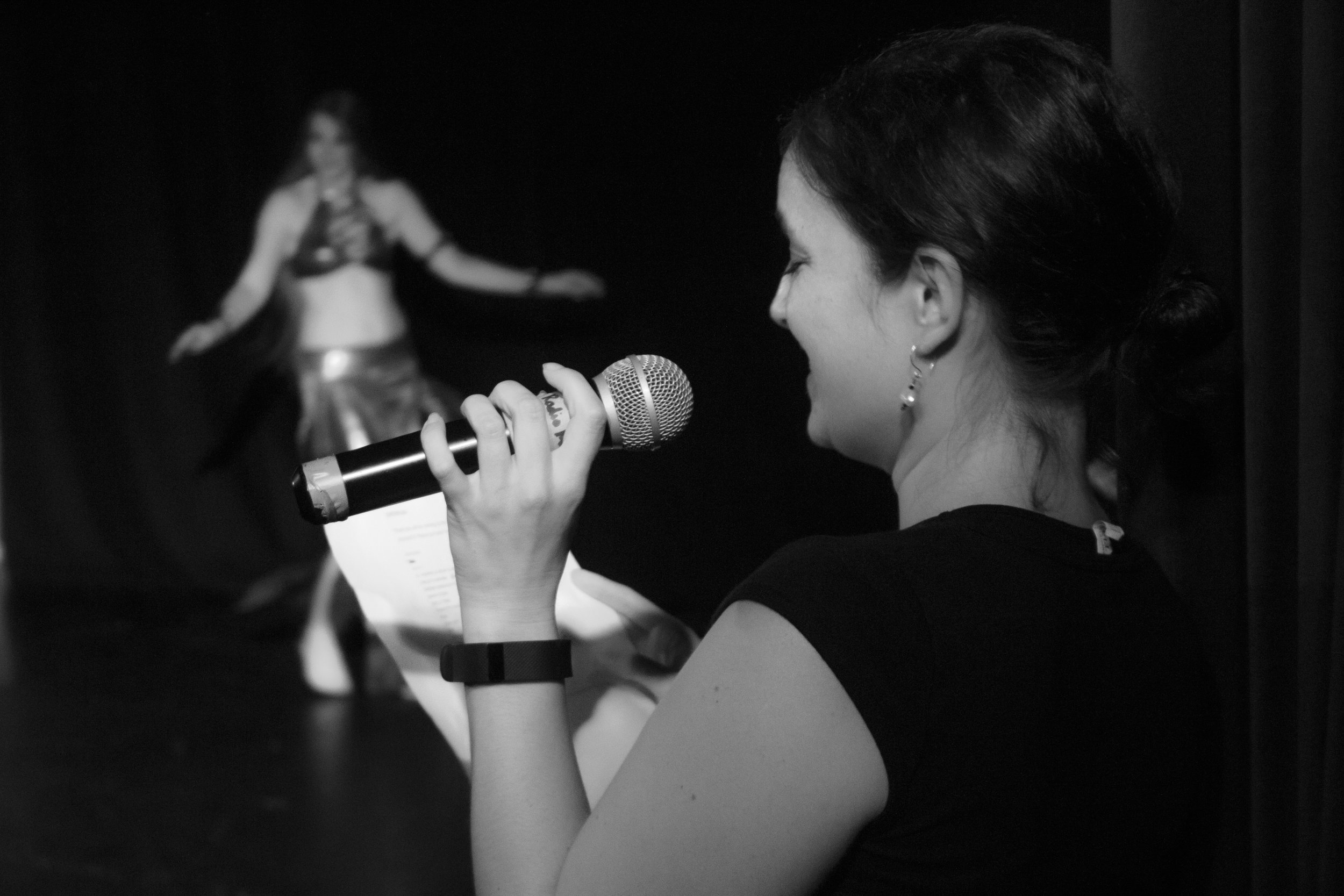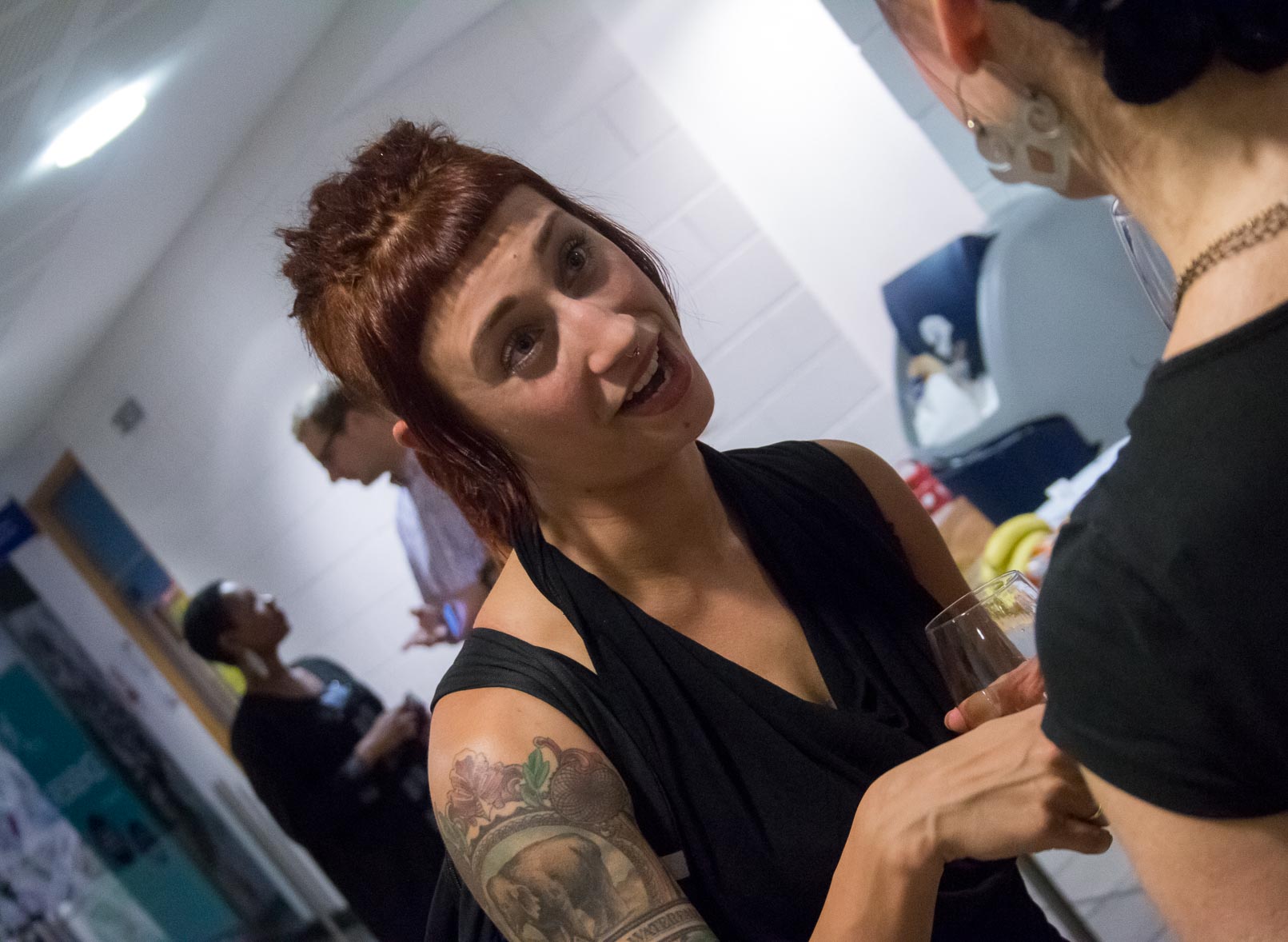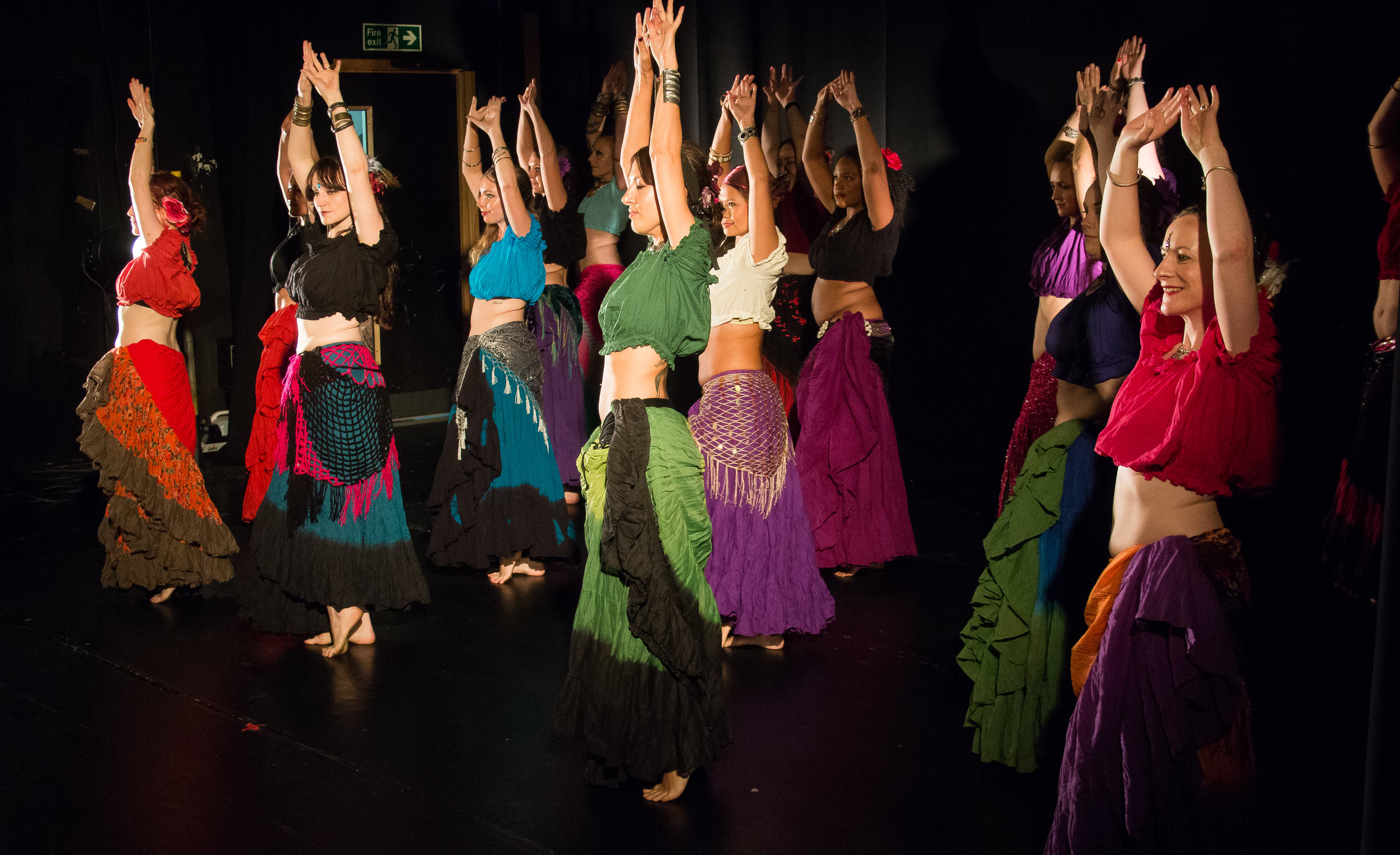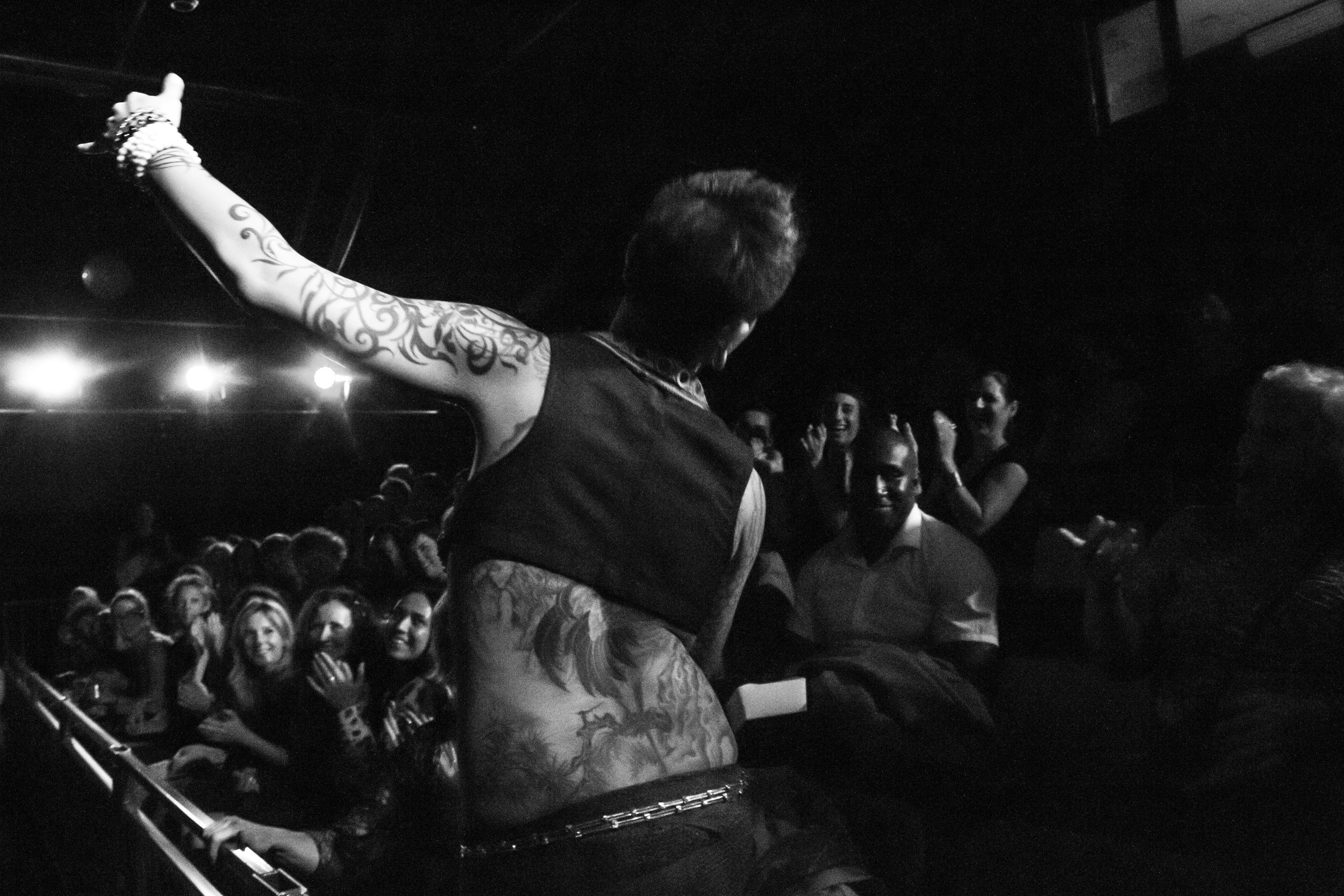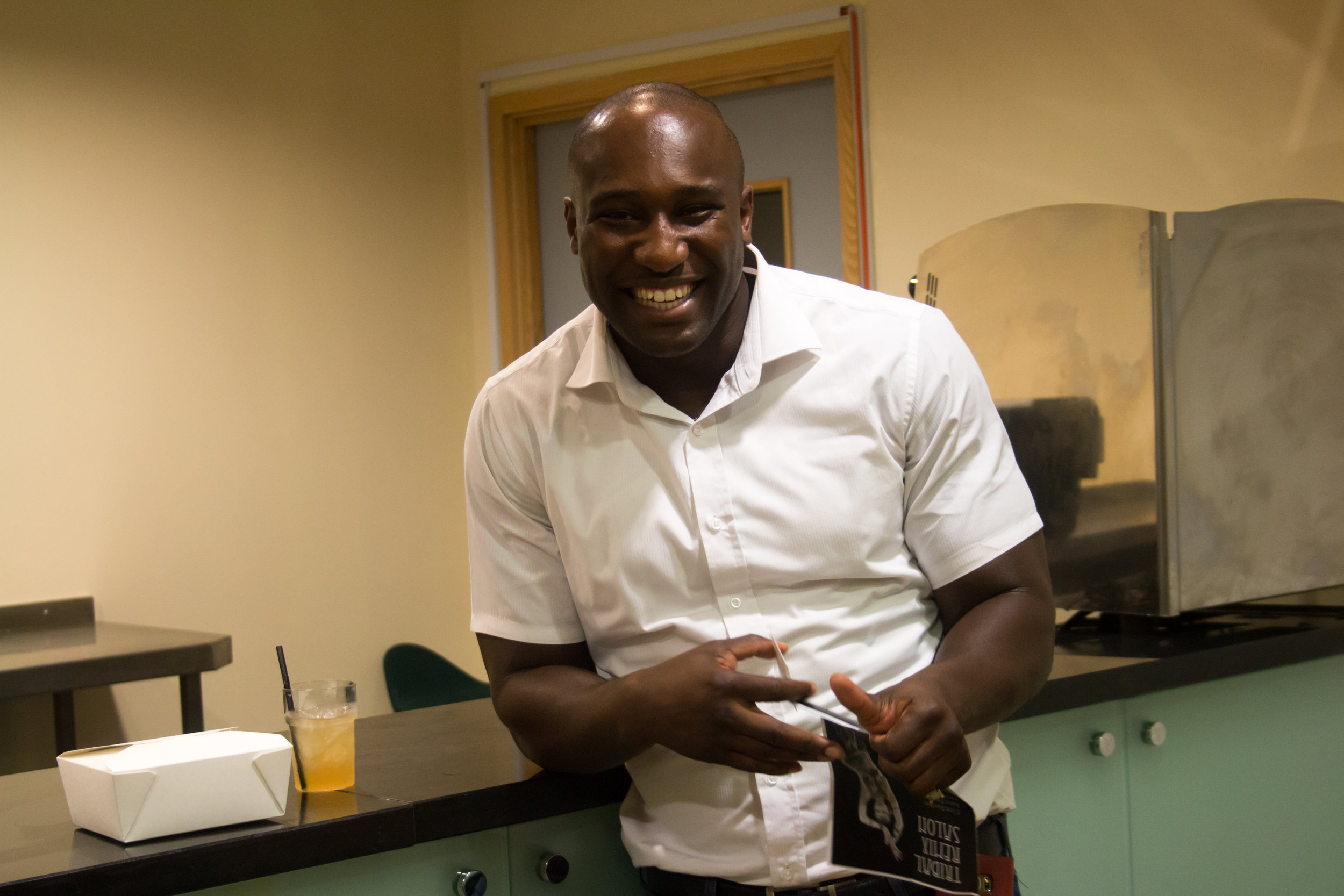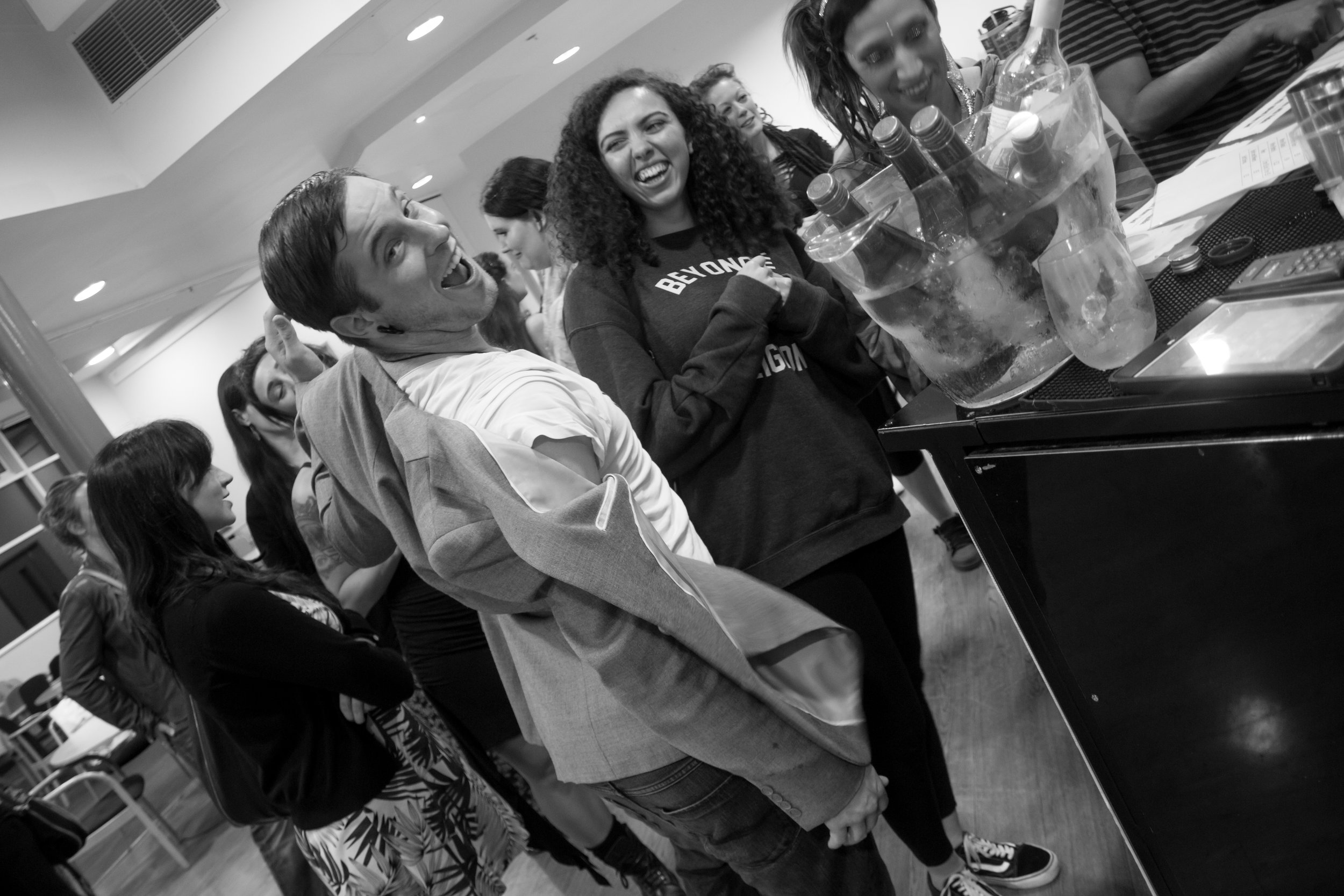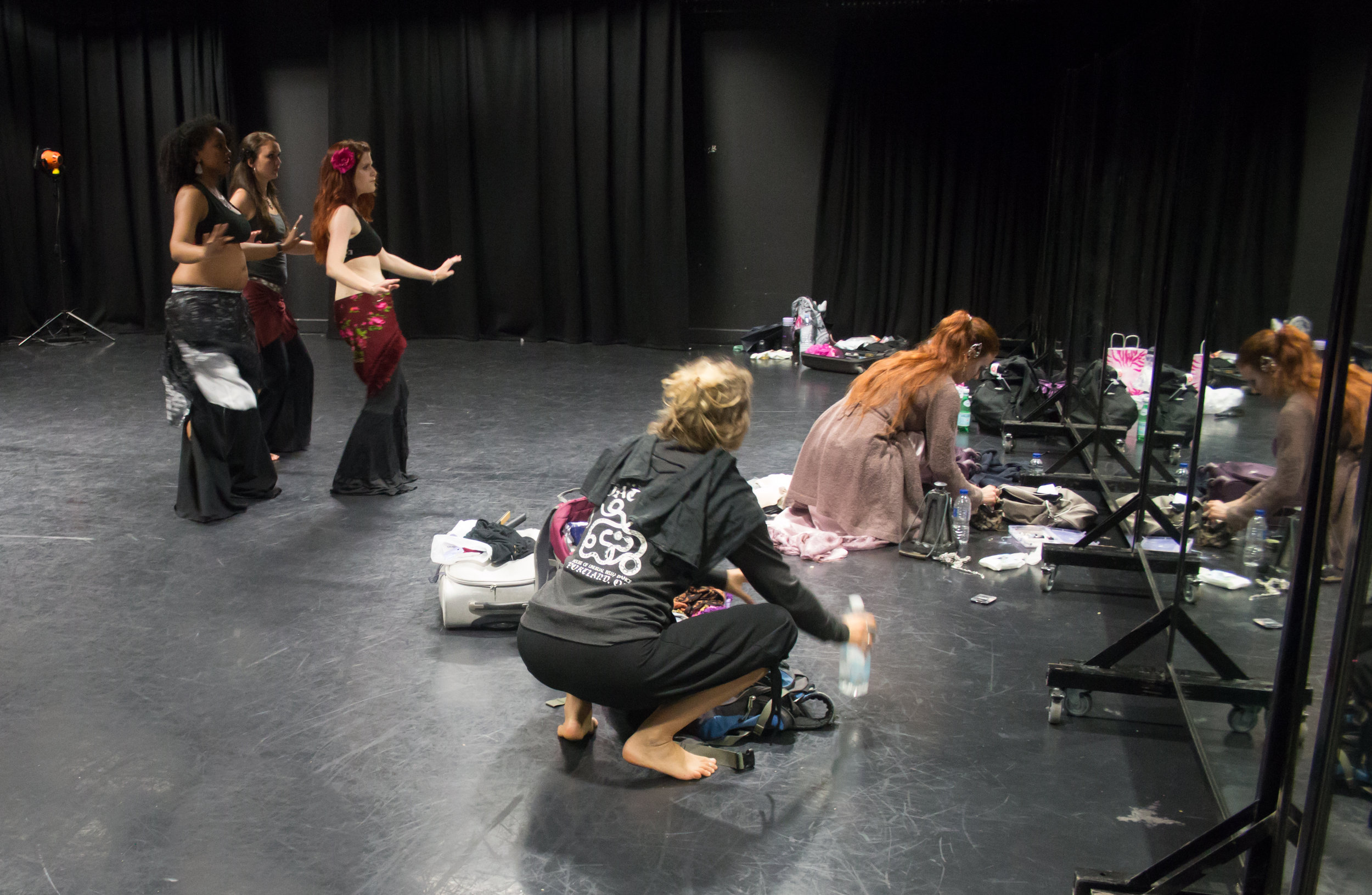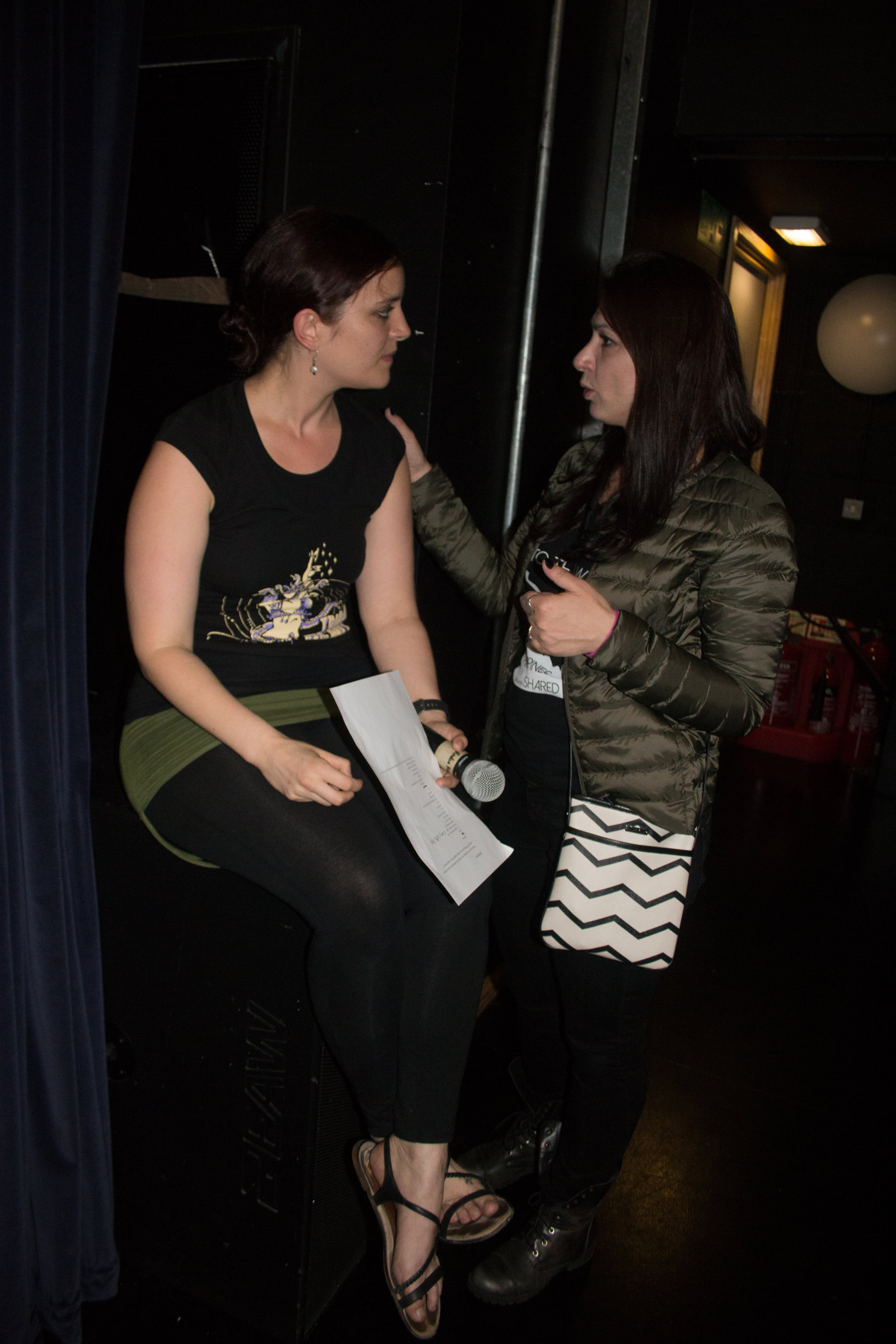In Dance And The Performative, Valerie Preston-Dunlop talks about the Nexus Of The Strands of the Dance Medium. With the strands, she refers to 5 elements that make up a dance performance - Performer, Sound, Space, Movement and Audience (this last one was added in her lecture on this topic, as it is not in the book)
Performer refers to age, gender, ethnicity, nationality, body type, costuming, body piercings, hair, make-up, tattoos, props used by the performer (such as veil, cane,...) as each of these elements will influence a performance in a different way, this influence might be subjective to the eyes of the viewer, but they influence nonetheless.
Sound refers to the music or sound score used in a performance, as this will undoubtedly also have an influence on the performance as a whole. In this strand we think of the lack of sound/music also being in this category. Or the sound of breath, shoes (for tap, flamenco), or finger cymbals.
Space refers to the space in which a performance takes place. This can be a theatre, cabaret, outdoors but also a club, a hafla or a restaurant. It also refers to any props on the stage, such as chairs, backdrops and it also refers to the lighting used on stage.
Movement refers to the movement used. We refer here to what we call in choreology as the structural model of movement, and can be divided yet again into 5 sections: space, dynamics, actions, the body and relationships (between body parts or between the different dancers on stage)
Audience: is there audience participation? This could be in the sense of cheering, clapping, zaghareeting, or in a restaurant, the dancer inviting members of the audience to dance with them. Again this will change the performance completely, hence why it's an added strand.
We can give a very clear analysis of any performance, using these strands. We can clearly write out which tendencies a style of dance has in regards to body type, gender, age, sound, space, ... There are of course, like anything, exceptions on the rule.
Nexus of the strands of the dance medium:
Valerie continues on in her book and refers to the Nexus of these 5 strands. The nexus refers to the connection, the relationship between the strands. This relationship tends to be: coexisting, integrated or juxtaposed.
Let's take a look at these terms:
integrated relationship between the strands means that one strand goes hand in hand with another. For example: a ballet dancer that is dancing in a tutu and ballet shoes, performing the movement vocabulary of ballet, using a soundscore of Tchaikovsky and dancing in the Royal Opera House. Each strand is completely integrated.
coexisting relationship between strands means that there is no link whatsoever between two strands. A great example is Merce Cunningham methods of working where he works with John Cage on a new performance piece. The music and movement are created completely separate from one another and dancers don't get to hear the music until the dress rehearsal.
juxtaposition is where two strands are juxtaposed against each other, and therefore creating a contrasting effect. A hip hop dancer dancing flamenco in ballet shoes for example. Or a ballet dancer dancing to punk music. (Karole Armitage) It is often intended to cause discomfort for the viewer, or to express a clear message to the viewer about the relationship by showing the contrast.
Through my own research in Tribal Fusion I found that Juxtaposition is a relationship that is often present between the strands. Many people often talk about 'good fusion' and 'bad fusion'. With the use of Valerie's ideas I believe we can find a clear way of describing what makes something work and why. Juxtaposition is something that often sits funny with the audience. The question is: was it the performer's intention to create this discomfort or not? I personally am all for juxtaposition from time to time, it is a good thing to challenge the audience, in my opinion. However, I believe it is important that this is an intentional choice.
To give you an example:
- The tribal fusion movement vocabulary consists mainly of gestures (body isolations) and body designs (poses) and the head-tail axis is very vertical. Yet, the space that is used these days is often grand theatre stages. Movement often does not get adapted to the big stage, and lighting often doesn't get used in an attempt to reduce the size of the stage. Hence there is a juxtaposition between the Movement strand and the Space strand. Movement gets lost on the big stage, yet it is not the intention of the performer to create a message with this juxtaposition.
- The tribal fusion costuming often consists of Afghan Jewellery, yet music that sometimes is chosen is dubstep/electronic/hip hop with no relationship whatsoever to Afghan culture. This is a clear juxtaposition between the Performer strand and the Sound strand, yet again, this juxtaposition is unintentional. Often the decision is made on the basis that they are following a costume aesthetic from one tribal fusion performer and following a sound aesthetic from another tribal fusion performer - but from the viewer's perspective that does not know this context, this link is missing and the relationship between sound and costume doesn't make sense at all.
These are just two examples, but there's a long list of situations where unintentional juxtaposition takes place. My aim with this post is to ask questions, to think critically about the choices we make as performers, about what message we want to send to our audience members. Because sometimes we send out the wrong message, but we don't quite understand why that is.
Contextually for us a lot of the relationships we make between the strands make sense, but for someone new to Tribal Fusion especially when coming from a different dance discipline, these relationships are often unclear. This is what Valeria refers to as the Kinaesthetic Gap. It is a gap between performer and audience, where an intention of the performer gets missed by the audience because of lack of information. This often causes discomfort or confusion or an 'I don't get it' response. If that is our intention in the first place, no harm is done, but if our intention was to invite our audience into our experience, this approach will eventually create alienation towards the art form.
My aim in this art is to move away from the 'us and them' culture that seems to be happening globally. Speaking to many tribal fusion artists all over the world about how they integrate with the rest of the dance community in their area, there seems to be a big gap between 'what we do and what they do'. Which is a shame as Tribal Fusion is one of the most beautiful and inspiring dances I've ever seen. I want to find out why there is this distance between tribal fusion and other dance forms and see how we can bridge this gap.
Yesterday, as part of Tribal Remix Salvador, Bela Saffe started a discussion with the participants about many of these issues. I think it is so great that dialogue is happening about this. A good point she made is to appreciate that this is still such a young art form. Violet Scrap added that it is during a time when so much access to any art is available through youtube, social media,... so we are influenced by so many sources.
I also think that in a dance style where inclusion is such an important element (which is a beautiful thing), perhaps we have shied away from critical thought about these elements, to protect this sense of inclusion. But maybe there is room for both: if we invite constructive critical thought about Tribal Fusion as an art yet respect the quality of the inclusive nature of Tribal Fusion, I believe it can be a win-win.
I would love to hear your input, so feel free to comment.
sources:
Preston-Dunlop, V. (2014). strands of the dance medium. London: Laban. Lecture: E-stream
Preston-Dunlop, V. & Sanchez-Colberg, A. (2002) Dance and the Performative: a choreological perspective - Laban and beyond. Hampshire: Verve Publishing.
UPDATE:
There was quite a bit of discussion regarding this post on social media. I find it great when discussion is happening, and I've really enjoyed reading people's different viewpoints on the topic. I'm in no way an advocate of 'the truth', I just like to share my points of view. Not all feedback has been that helpful. For me, comments like: 'yes, I agree! I don't like Tribal Fusion for this exact reason!' or comments like: 'Urgh! I am so bored with people trying to criticise what I do!' I don't see how this is in any way creating an interesting debate on the topics touched on in this article. In fact, it creates yet again an 'us and them' culture, even within our own community.
As a reaction to one of the comments on this post (which was on facebook, not on this blog page) that was in the tone of the above comment, I posted a reply. I wanted to share it here too, because I think it has some valid points that need to be addressed also. My mind is never static, in fact, I change my opinions quite frequently when new info, new thought becomes available. I find this fascinating and I love people's views on what I write, however different of mine it may be. If we openly discuss each other's differences with an interest in what each of us has to say and why, we are really onto something here...
Here is the response about the 'I am tired of people criticising my dance' comment. I decided not to post the original comment that I am responding to, because I didn't see it as relevant to the response below. It was a comment that I have heard more than once in the tribal fusion community and therefore my response was more a general response to these kind of comments.
''If the tribal fusion community is about community and inclusion would that not mean that there can also be a place for people to have questions about the art form, respectfully, without feeling that they cannot share their views on an art form they dedicated their life to? If inclusion and community is only towards those that share the same views of 'everything is wonderful all the time', then I believe that is a big alarm bell. As it turns out, many tribal fusion artists do want to have these conversations. I believe there is a place for everyone. If discussion of the art is not someone's thing, that is of course totally ok. However that doesn't mean this discussion is not worth having. I have written this article not because of an isolated view I have, but because of talking to many artists. In the 15 years I've been in the fusion dance world these questions came up on a regular basis from within the community. People that have dedicated their lives and dance careers to tribal fusion, not outsiders that know nothing about this art. So it is not a phenomenon of outside dancers dissing this art, as it is people that care and love the art that are having questions. A phenomenon I often notice within tribal fusion is that people that have any form of criticism get a backlash of others trying to defend the current state of the art and basically silencing people's valuable thoughts and feelings. So much so that they don't dare to speak up publicly and go with the flow of 'everything is amazing' just because they are worried of being shunned from their very own community. I believe it is important to be kind and respectful to the artists in our community, yes, but we can have critique without cattiness, name calling, finger pointing, backstabbing and other unfavourable behaviour. But it goes both ways. As I think there is room for everyone.''




